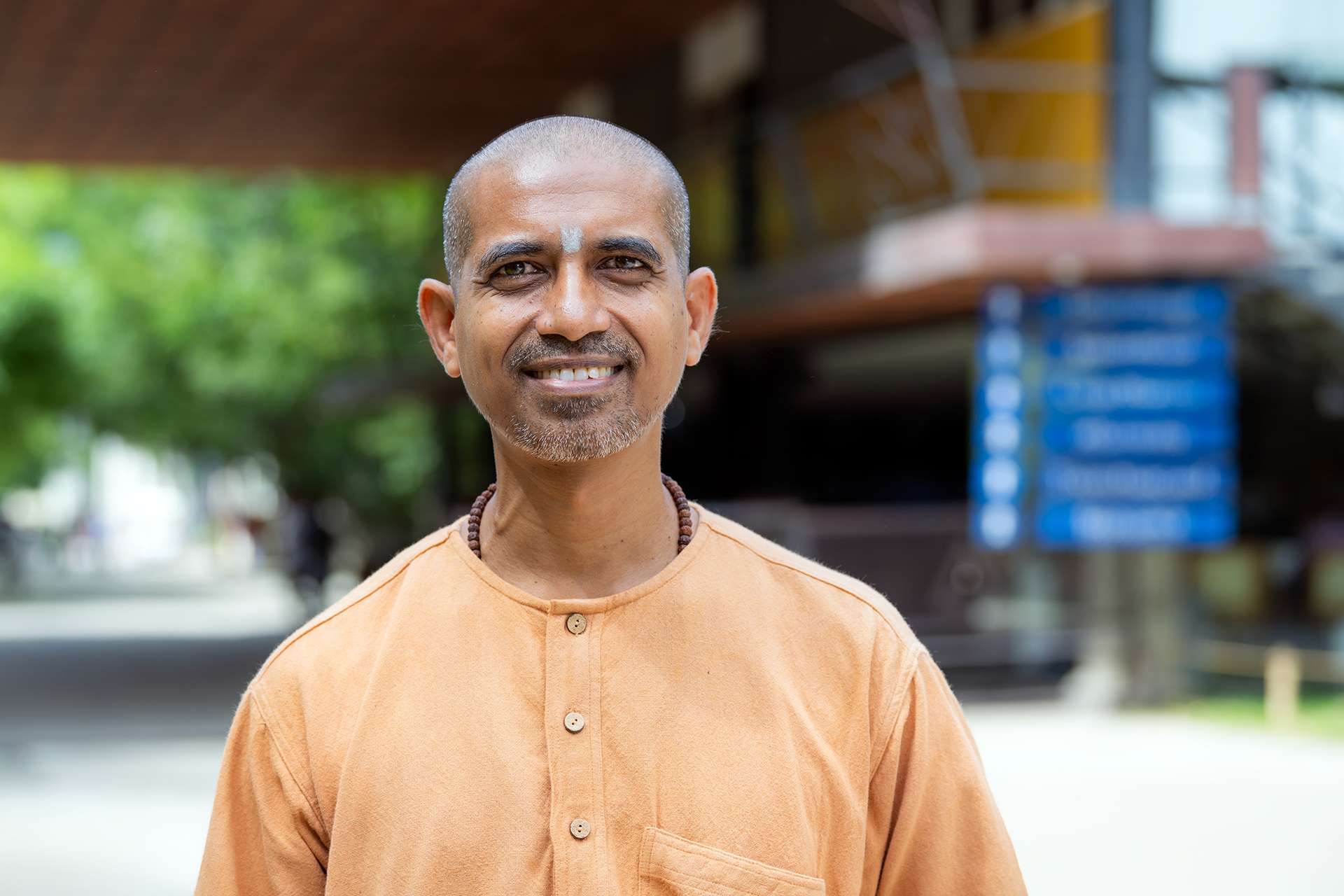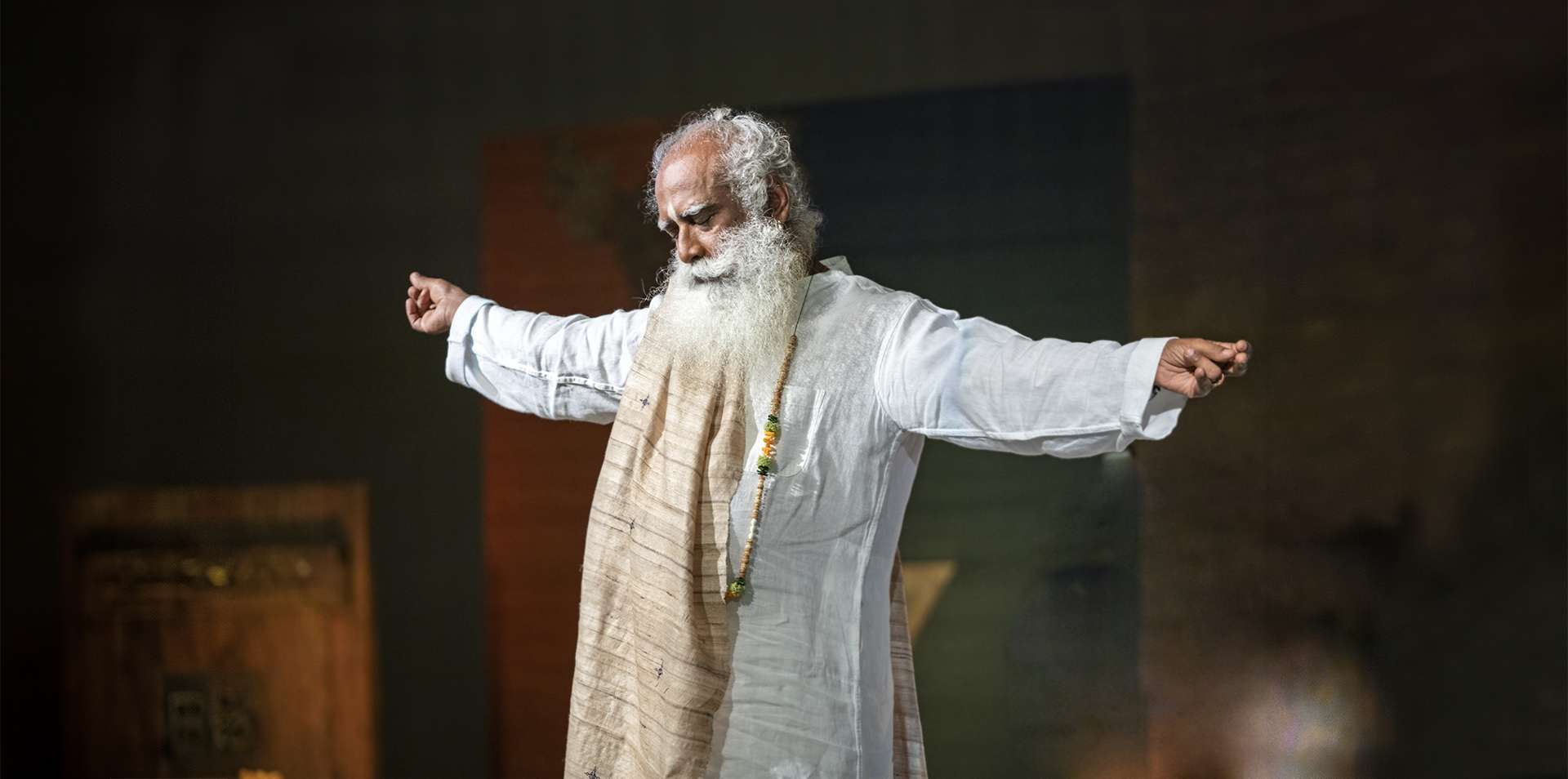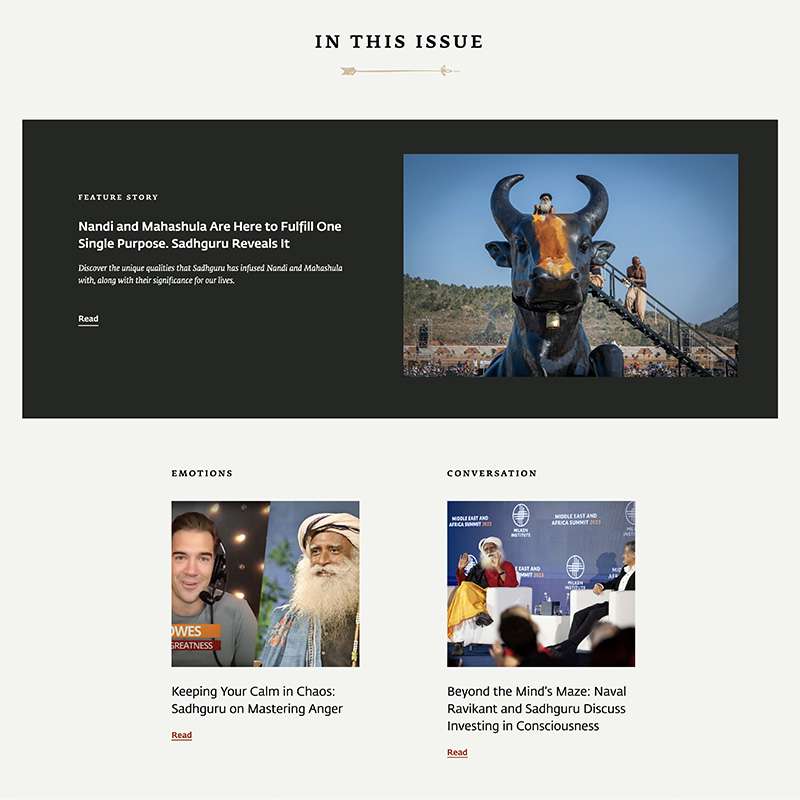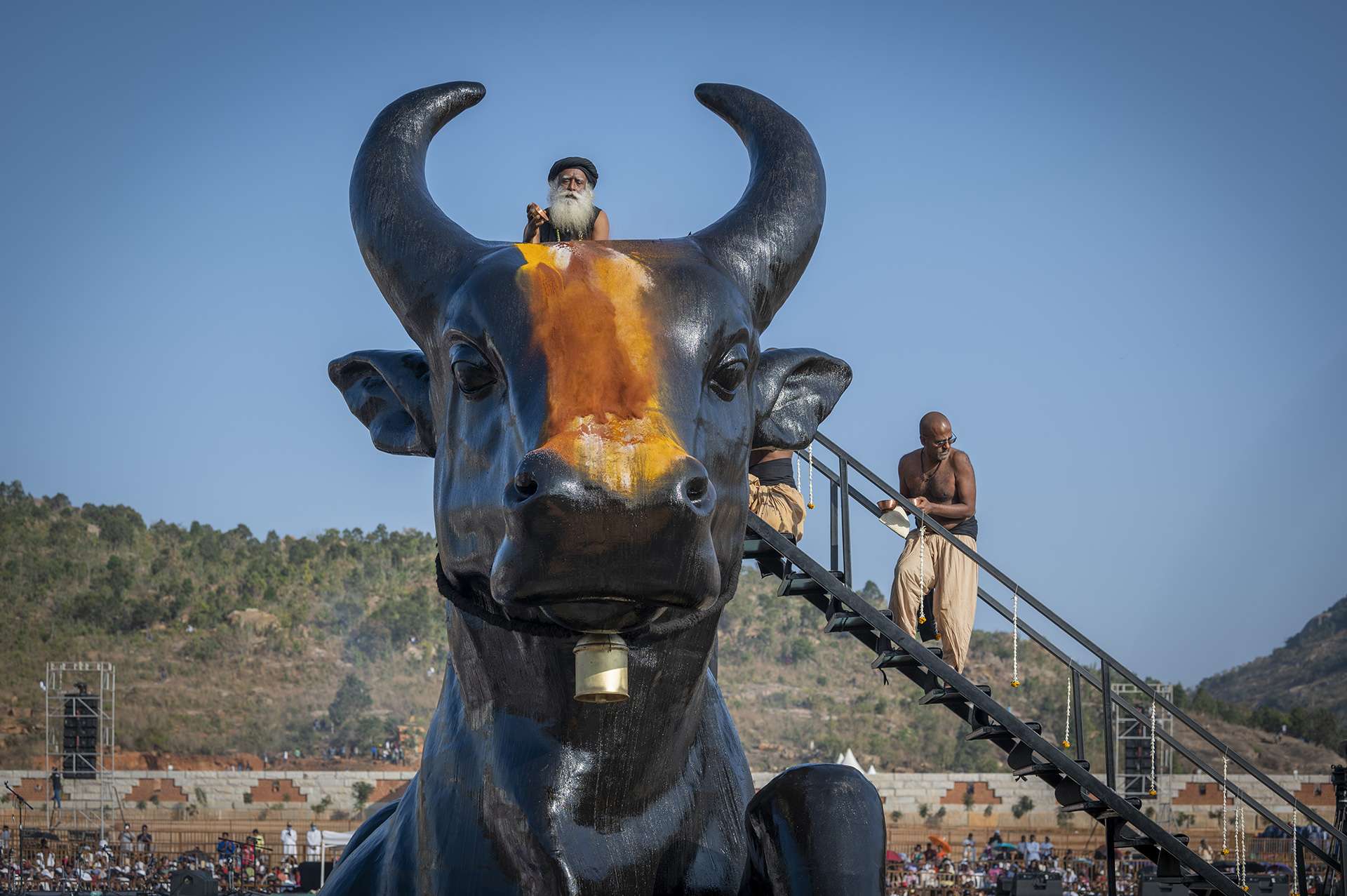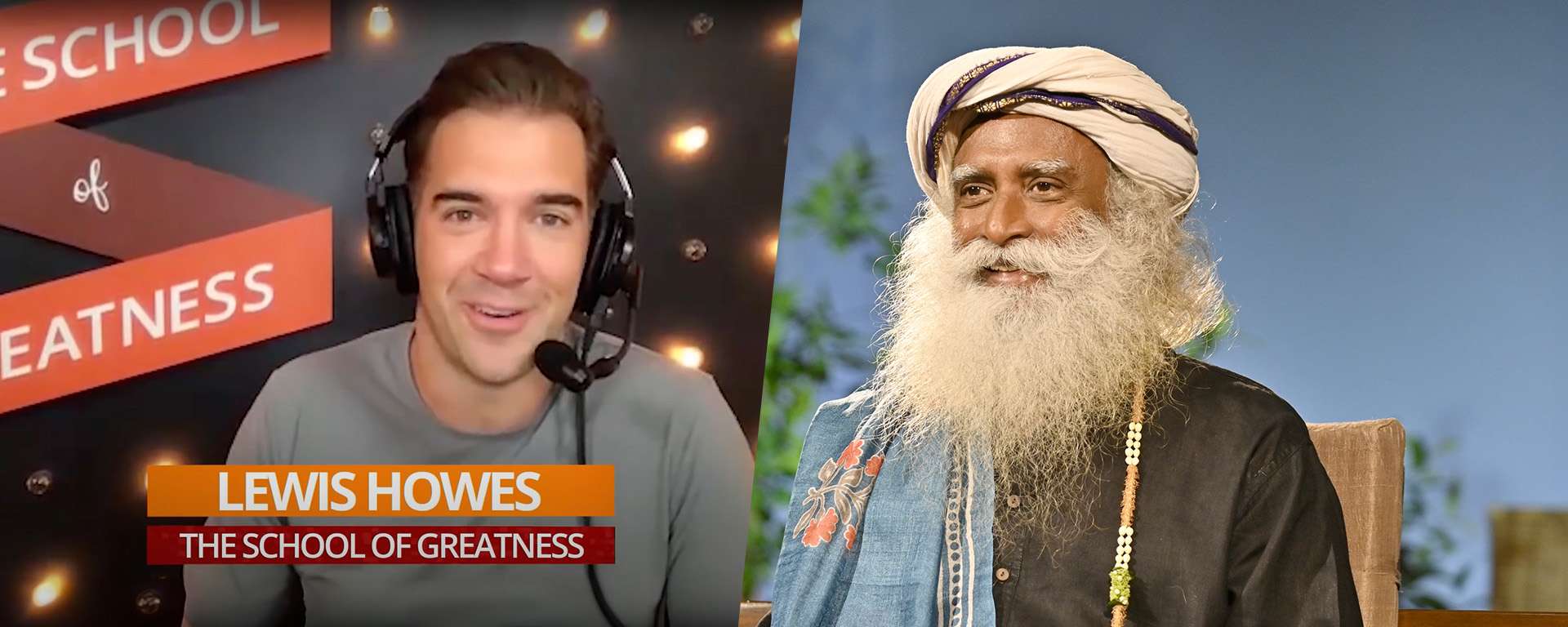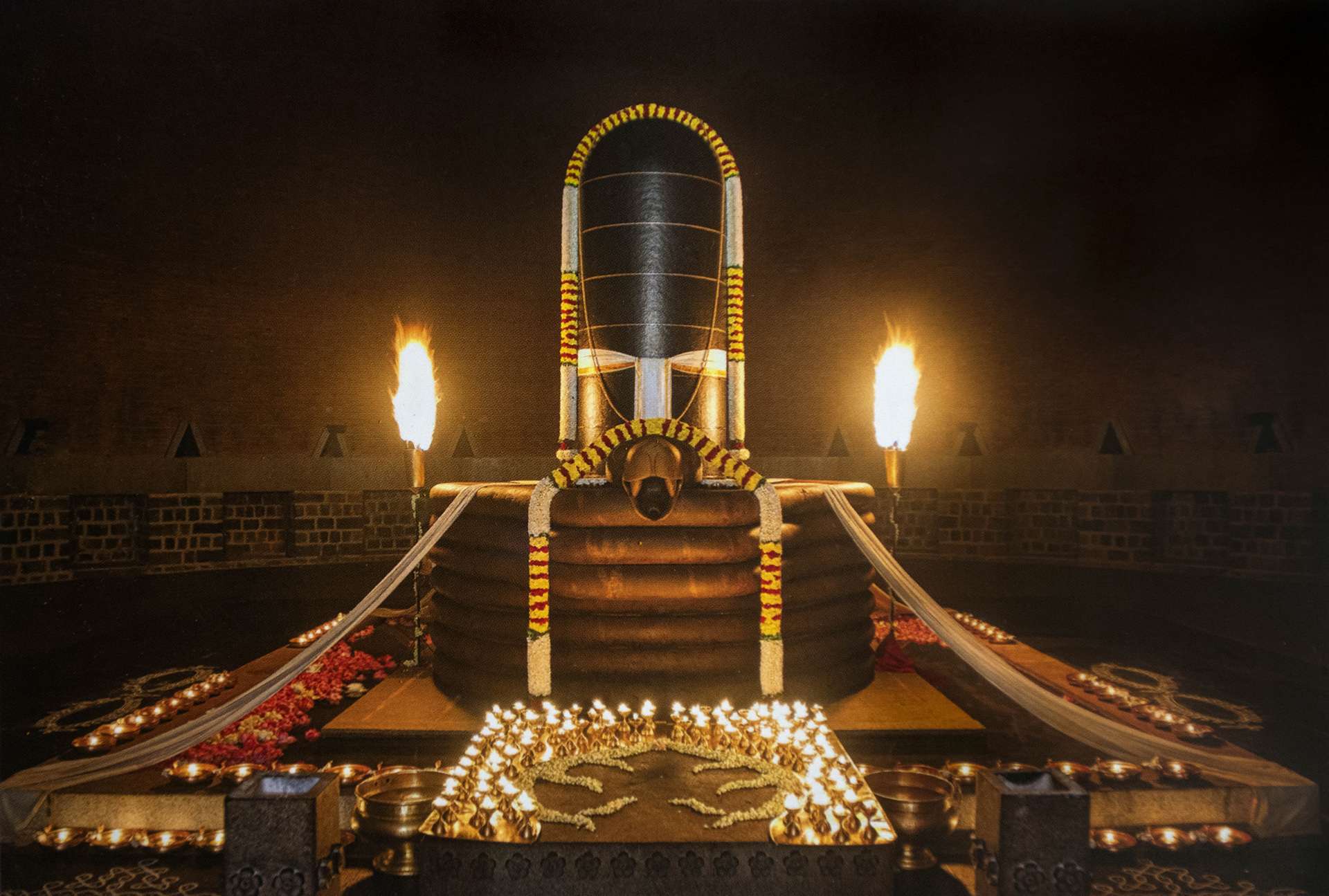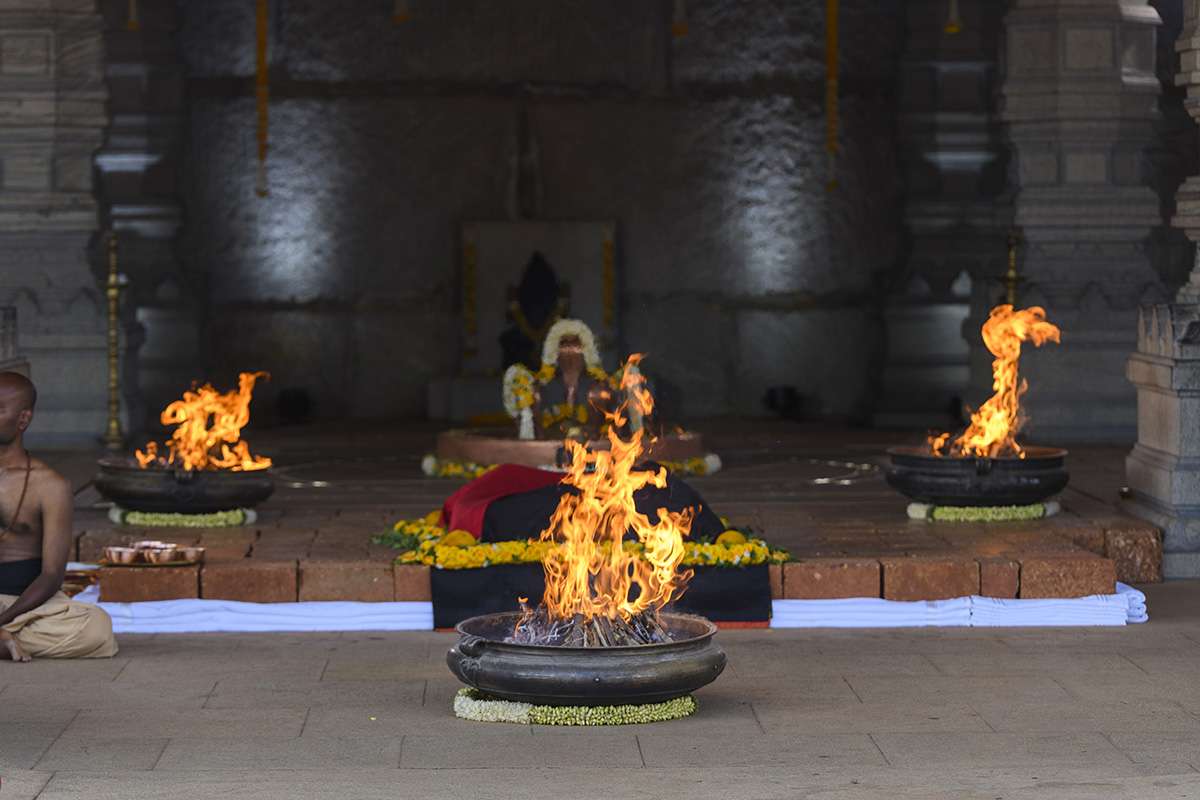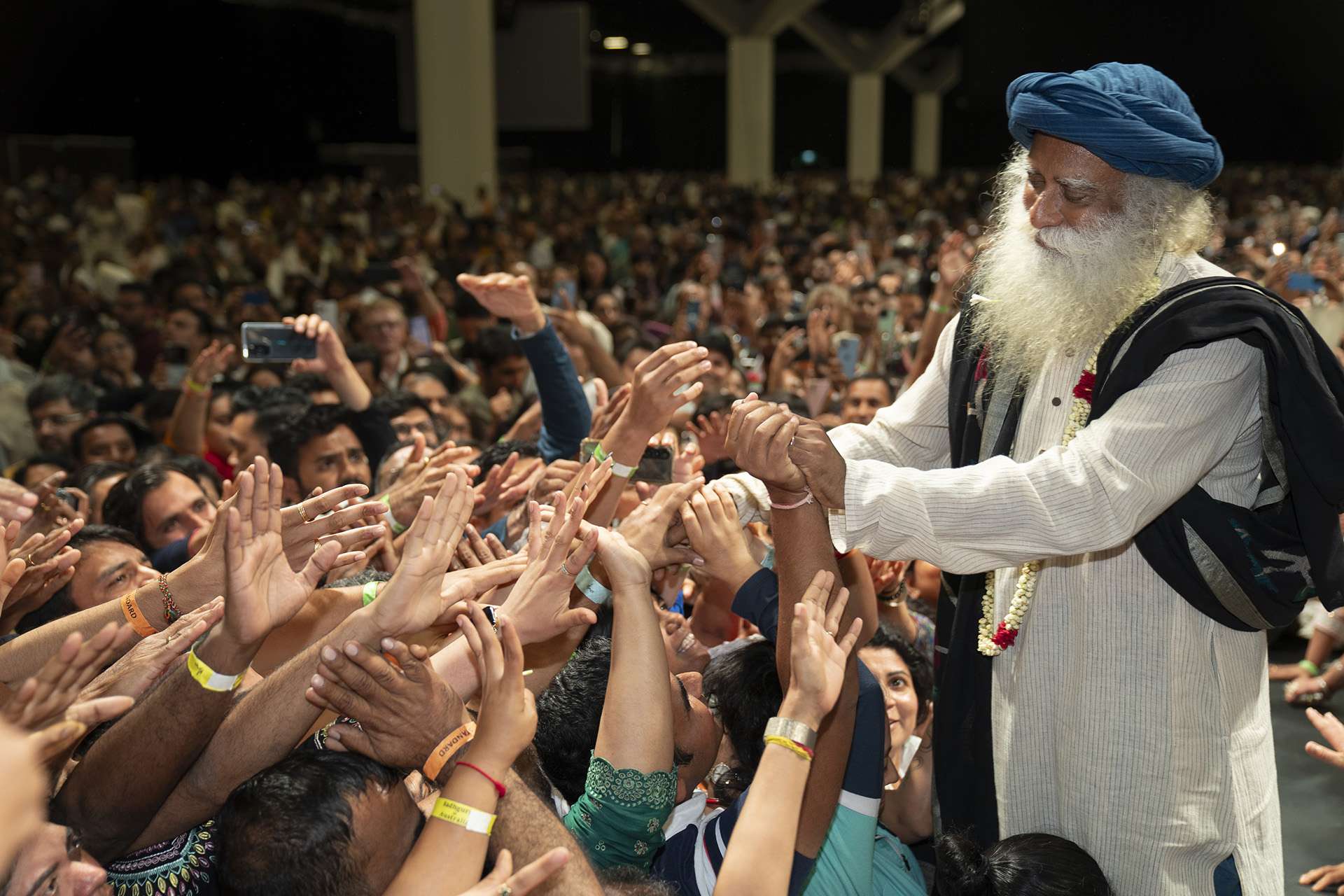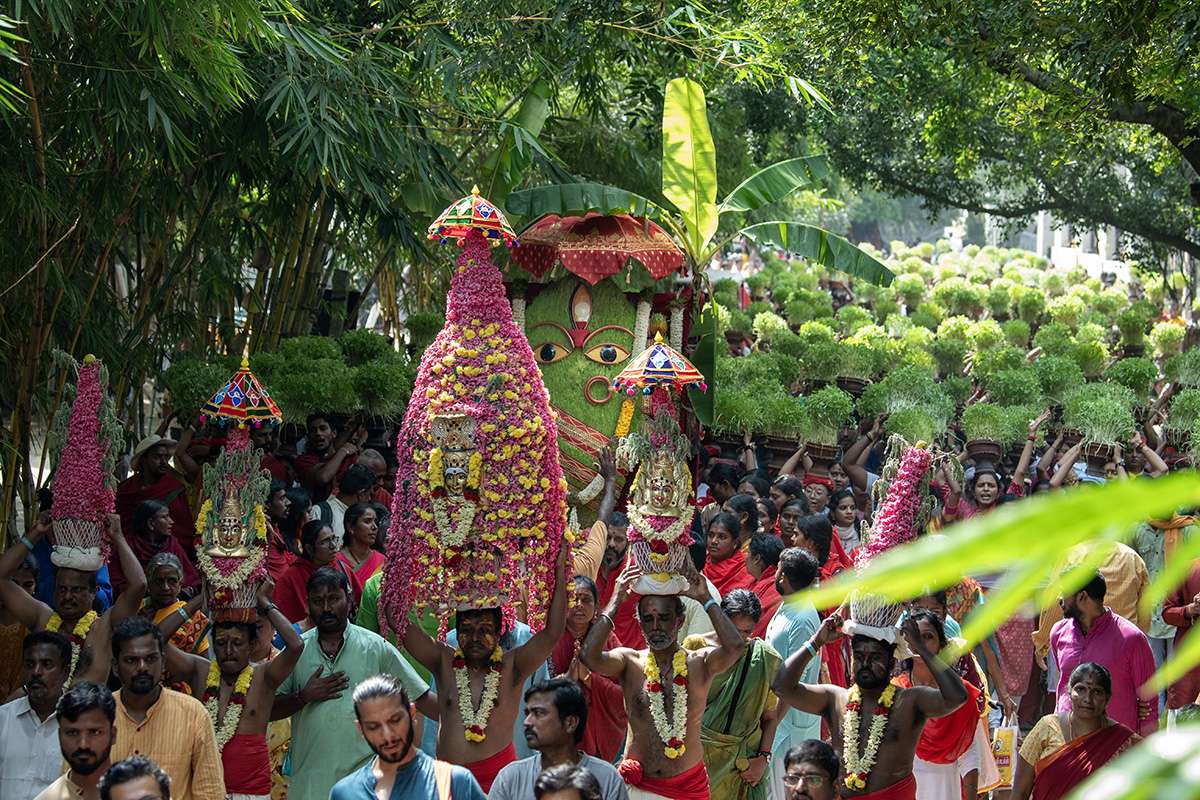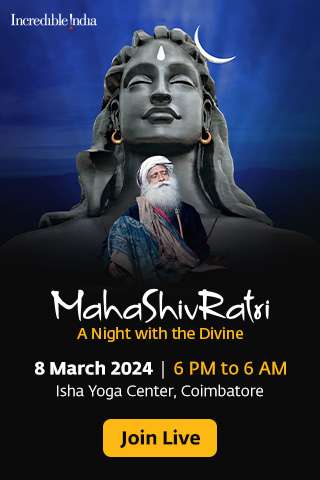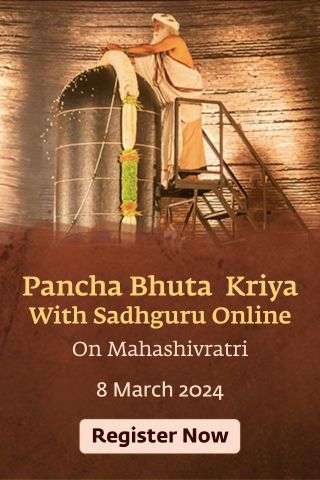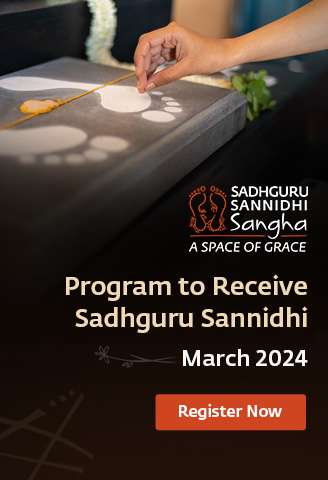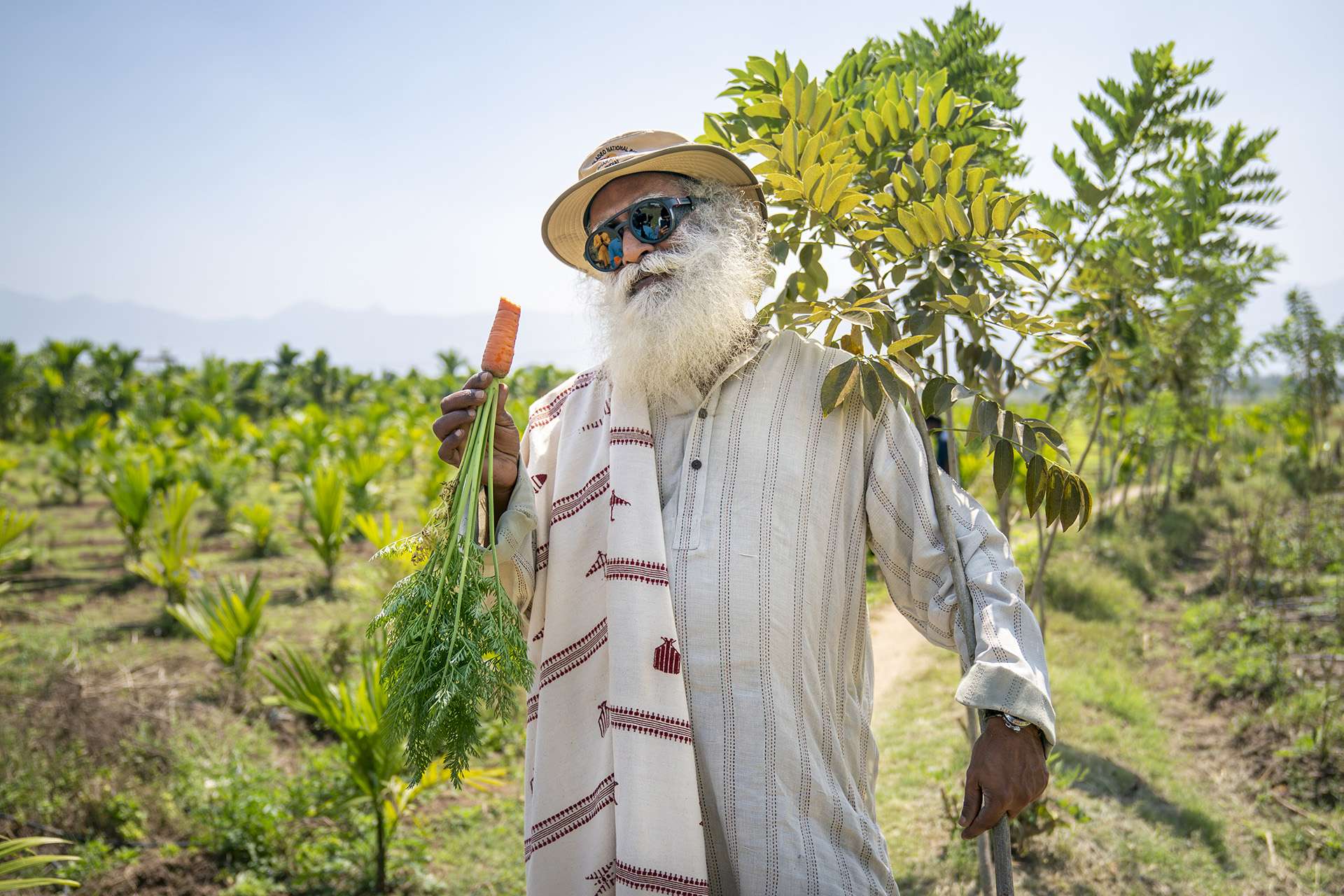In this loose series, Isha brahmacharis and sanyasis share their individual backgrounds, observations, and experiences of what it means to them to walk this sacred “Path of the Divine.”

The “Silent Temple”
My first longing for the unknown surfaced when I was 14 years old. A classmate had just returned from Palani Padayatra[1] and was observing vrata [2]. I felt an intense longing within me to experience this, which was perhaps the beginning of my journey. I went for Palani Padayatra and many similar folk traditions over the next 10 years, until I heard about the “silent temple.”
I was walking to Sabarimala with a group of friends in 1999. We had been to many temples on the way and were discussing our experiences. My friend’s brother mentioned a cave-like silent temple with a tall linga. “There are many small caves inside the sanctum where one can meditate,” he added. Noise is an integral part of the ambiance in temples in India, so this silent temple intrigued me. “The organization also offers a 13-day Yoga program in Madurai every 3–4 months,” he told me later, seeing my interest in the temple. I asked him to help me register for the next program. I didn’t have to wait long.
On 17 January 2000, I attended the 13-day Isha Yoga class. During the program, I was particularly impressed by the way volunteers took care of us. There were people from all walks of life offering themselves only because they were touched by the experience of Isha Yoga. On the culmination day, I traveled to the ashram in Coimbatore to participate in the Bhava Spandana program with Sadhguru. After the Bhava Spandana program, the longing to be associated with Isha deepened even more within me. Within the same year, I finished the Guru Pooja and Hatha Yoga programs and registered for the Pre-Samyama meet.
At the time, Samyama was happening in Kaivalya Kutir, the only hall in the Isha Yoga Center. Kaivalya Kutir could accommodate only 200 people, so serious seekers were given the preference. As I hadn’t finished even a year of practice, I was asked to participate the next year. I felt an unexpected seething pain within me, but I didn’t insist. However, the sector coordinator of Madurai had been observing my “silent” longing, and somehow got me registered for the program. After Samyama, I knew, “That was it!” I had to be in the ashram.
Back home, I had joined a family friend’s business and was setting up a new unit for him. I thought I could continue to manage the business until my sister was married. This also seemed the way to make my parents at ease about my decision.
A few months later, Sadhguru came to Madurai and a Satsang was announced. At the time of the Satsang, I was expected to stay at the office to take care of an urgent situation. I just couldn’t bear missing Sadhguru’s Satsang for office work, and simply walked out of that job. Just like that I left the job! While still waiting for my sister’s marriage, I continued to volunteer in Madurai.
[1] Traditional pilgrimage by foot to Palani Murugan Temple from points all over southern India.
[2] Period of sadhana.

Cooking in Singanallur
In July 2001, I moved to the ashram. During my first year at the ashram, I cleaned corridors, toilets, and volunteered during the programs. I began brahmacharya sadhana in preparation for initiation during Mahashivratri in 2002, but had to come out of the sadhana because I came down with chicken pox. I can still feel the warmth within me when I think about the way the brahmacharis took care of me during my illness. I was initiated in 2003, which was the last time Sadhguru initiated brahmacharis on the stage of Mahashivratri.
After the 2002 Mahashivratri, I was sent to the Singanallur office and was assigned to “cooking”! I had occasionally helped my mother at home, but I never imagined cooking elaborate meals for 4–20 people by myself. Cooking is a consuming activity, as it needs to happen every day and on time. I enjoyed it and experimented with different recipes – especially rasam. Everyone liked the rasam I used to make. “Did you really make this araitha kulambu?” asked Swami Abhipada once, unable to believe that I could conjure up that taste.
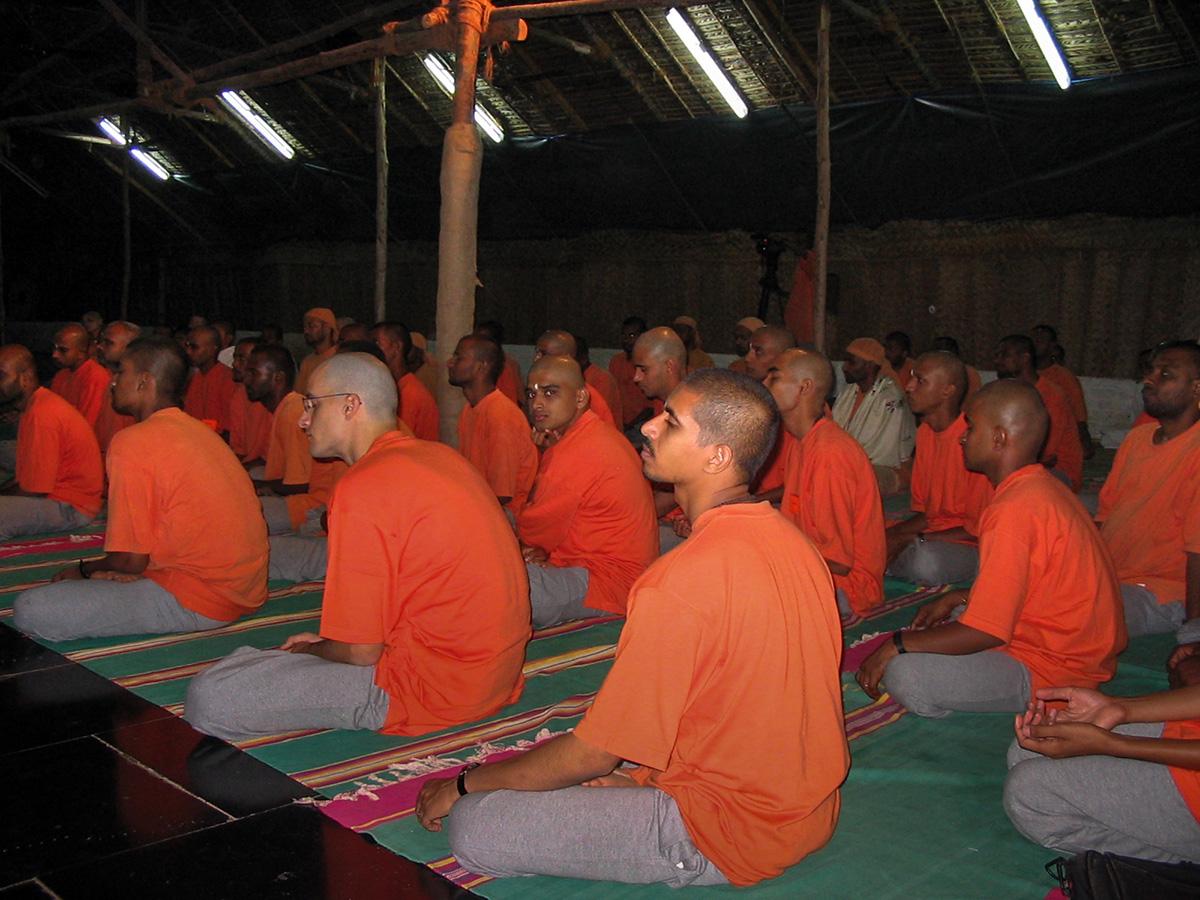
Working with the Wonderful Volunteers of Chennai
After four months, I was sent to Chennai to support Swami Suyagna who was working tirelessly to reach out to the people of Chennai. Swami was doing extraordinary work in the region, and within a year, the number of volunteers had increased manyfold. Since I was also training to be an Isha Yoga teacher, I started to support him in his field activity. We both were so busy that the volunteers had to bring food for us. Our first meal would happen around 1 pm and dinner around 11 p.m. But this hard work was paying off and the Chennai zone was thriving. In one year, we had 60 core volunteers willing to do anything needed to take Sadhguru to the people of Chennai. The devotion and commitment of the volunteers was heartwarming.
Once, I called a volunteer around 9 p.m. to help us pick up a packet that was arriving by roadways bus. It would take the volunteer at least an hour to travel to the bus stand. “I am in the middle of some…,” he started to sound apologetic soon after I spoke to him about the errand. Suddenly, his tone changed and he firmly said, “I will bring it, Swami.”
“Are you sure?” I asked to give him some space to decide.
“I am 100% sure, I will get it,” he said without any hesitation. He dropped the packet at our office at half past midnight. I had no words to thank him, but this is how the volunteers were – fully fired!
We started 12–14 centers in Chennai, each with its own coordinator. With so many centers coming up, we became so active that our phone was continuously busy. Once it happened that I picked up the phone and heard a somewhat familiar “Namaskaram,” but I couldn’t really place the caller. “I am Sadhguru speaking,” said Sadhguru. I became a bit nervous and tried to be as alert as possible. “Please send some Action for Rural Rejuvenation (ARR) brochures to Vishwanath’s house,” he said and gave the reason for his call.
“But Sadhguru, I am not sure if I have seen the ARR brochure,” I said feeling sorry about it.
“You surely have those there,” he said and explained to me the design of the brochure. In no time, I spotted the brochure he was referring to.
“I found them, Sadhguru, and I will send them,” I quickly added.
“Do you know Vishwanath’s address?” he asked.
“I will find it, Sadhguru.”
It was so inspiring to see how he intimately remembered the brochure design, and the patience with which he explained the brochure to help me find it. He could have easily asked another volunteer to call and explain, or asked me to have Swami Suyagna call him. Instead, he spent time helping me do it. I was so humbled by my first phone call with Sadhguru.

Perking Up the Sadhana
Another time, Sadhguru came to Chennai for a program. “How is your sadhana going?” he asked me one time after the program.
“Well, Sadhguru!” I said.
“Do more!” he said looking into my eyes. The impact of these simple words has been unexplainable. Since that day, I have never missed my morning Guru Pooja and sadhana. Most days, I wake up for Brahma Muhurtam[3], even when I sleep late at night. In fact, my current activity is such that on most nights, I don’t sleep before 11 p.m. So, when he asks us to do something, if we give ourselves to it, he also empowers us to do so.
[3] The period of time before sunrise, starting from around 3:30 a.m.
Fixing the Flex
In 2003–2004, for our programs and events, we used to print Sadhguru’s picture on flex banners. I noticed that on flex banners, Sadhguru’s hair was tinted a cyan color, while the same design with the offset printing on paper didn’t have this tint. I had seen celebrities and politicians’ pictures on flex banners and those looked good. I wanted Sadhguru’s photo to look that sharp and original. When I inquired with the printers about the tint, they said that it was a problem with the resolution of the photo or the quality of the camera, and not a printing issue. I wasn’t satisfied.
One time, I played pally with one of the printing technicians. I sat with him and simply watched what he was doing. He was tweaking the picture in Photoshop to get it ready for the print. I suggested that he reset the print parameters to remove the tint. We tried many things, but if the tint was fixed, something else would get messed up. We tried all night. By then, I also learned the effect of different print parameters and tried a certain ratio to print. Lo! It worked. That was the first time we got a banner without the green tint. Since then we started printing all Sadhguru’s flex material in Chennai, and I was given the opportunity to coordinate it.
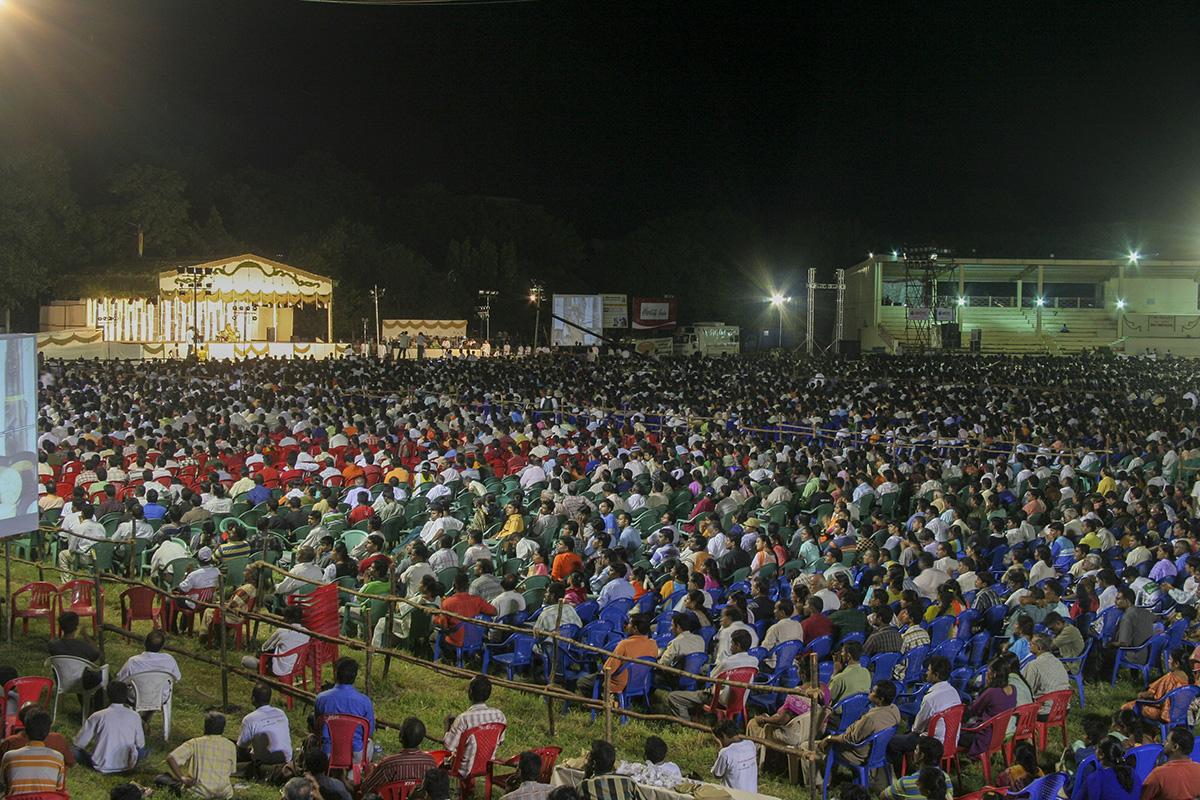
Pushed in the Water to Learn Swimming
In 2007, Sadhguru announced Gramotsavam in Chennai. The Chief Minister of Tamil Nadu had accepted our invitation to join the event as our chief guest. More than 5 lakh people were expected to attend, and a team of Isha Yoga teachers led by a brahmachari teacher was stationed in Chennai for a few months prior to the event. My role was to support the lead brahmachari in securing logistics for this mammoth event. It so happened that the lead fell ill, and he left me with this enormous task of securing contracts with vendors for printing, audio, electricity, hoardings, and whatever else you can name. I had absolutely no experience in all this, but it turned out that we negotiated contracts with the best terms ever. For example, we paid 50% less for printing, 30% less for lighting, and 50% less for hoarding work. Sadhguru’s growing presence encouraged vendors to participate and the sheer scale of the events offered economies of scale to the vendors, hence the lower prices. We built such rapport with the vendors that some of them are still with us and support us for Mahashivratri each year.

The event, celebrated on 23 September – Sadhguru’s Enlightenment Day – happened gloriously, featuring for the first time rural cultural and musical performances, rural Olympics, and a rural food festival for urban masses. The speech of the chief guest, Honorable Chief Minister Dr. M. Karunanidhi, was very inspiring. I was particularly fascinated by how the CM added to Sadhguru’s exposition of how we are related to trees. Sadhguru had said what we inhale, trees exhale, and adding to his words, the CM said, “Maraththai naam valarththaal, maram nammai valarkkum (If we grow trees, trees grow us),” and simplified it for all. Later in the evening, the CM inaugurated Project GreenHands’ 25 million tree planting campaign. So all in all, Isha Gramotsavam in 2007 has been one of the most memorable moments in my journey with Isha.
After Isha Gramotsavam, two decades of Isha volunteers’ work in Tamil Nadu had just begun to bear fruit. In 2008, Sadhguru launched another special event called Ananda Alai – “A Wave of Bliss.” It was a series of 7-day Isha Yoga programs conducted by teachers, culminating with a Satsang with Sadhguru in each city. These programs touched the lives of over 100,000 people in total. The sheer scale tested our logistics, efforts, and commitment to create a conducive ambiance for an Isha Yoga class. An interesting challenge was to keep footwear of the 30K participants in order during the culmination Satsang with Sadhguru. In the first program, we tried 6 separate bays for footwear, but for 5,000 people to find shoes in one bay became quite tedious. So, in the next city, I suggested dividing each bay into lanes, and that worked wonderfully well. Like this, from city to city, we learned how to manage large-scale programs keeping intact the Isha way.
Ah! Technology
As the Chennai zone grew leaps and bounds, so did the complexity of ensuring that everyone was connected and had access to the tools Sadhguru offers. For example, to hold monthly Satsangs in all the centers in Chennai, we needed to identify and inform everyone who had completed the program in that location. Sounds simple, but it was not that simple back then. It is interesting that even the information about the participants who took the Sahaja Sthithi program with Sadhguru was in our records. I had the opportunity to sort all those papers when I was in Singanallur. Later we fed that into excel sheets, but still to match the participants with the center was a humongous task that we were doing by manually surfing through various sheets.
One time, a volunteer created a simple query program that could just throw out the center choices by entering some static info about the participant. It was a Eureka moment for me. Today, we are running an entire CRM[4] at the Isha Yoga Center, but I can’t describe the joy I felt at that moment when I saw that by typing a few letters, I could know the best center for that participant. Since then, I have been a fan of using technology. Any activity that I do, my mind automatically starts thinking how technology can be used to make it better. During my time with Isha Sacred Walks, with the help of a volunteer in Coimbatore, we made online registration possible, and for the first time, with the support of the finance team, we launched e-receipts. E-receipts were not a common thing even among the corporate sector in India at the time.
In the process, I also learned that when we want to change something, we need to take short steps, taking everyone along. For example, when it came to shifting to online yatra registration and e-receipts, I ensured that the online presentation had the same layout as the printed form. This helped many other departments to accept the transition. Similarly, for e-receipts, we just reproduced the manual receipt layout electronically. Issuing e-receipts changed donation processing in a big way. After a donor made the payment, it would be a nightmare both in terms of time and money to courier a receipt, and donors complained about non-receipts. Now, e-receipts are being used for every kind of donation or payment we receive from individuals.
[4] A technology for managing all of an organization’s relationships and interactions.
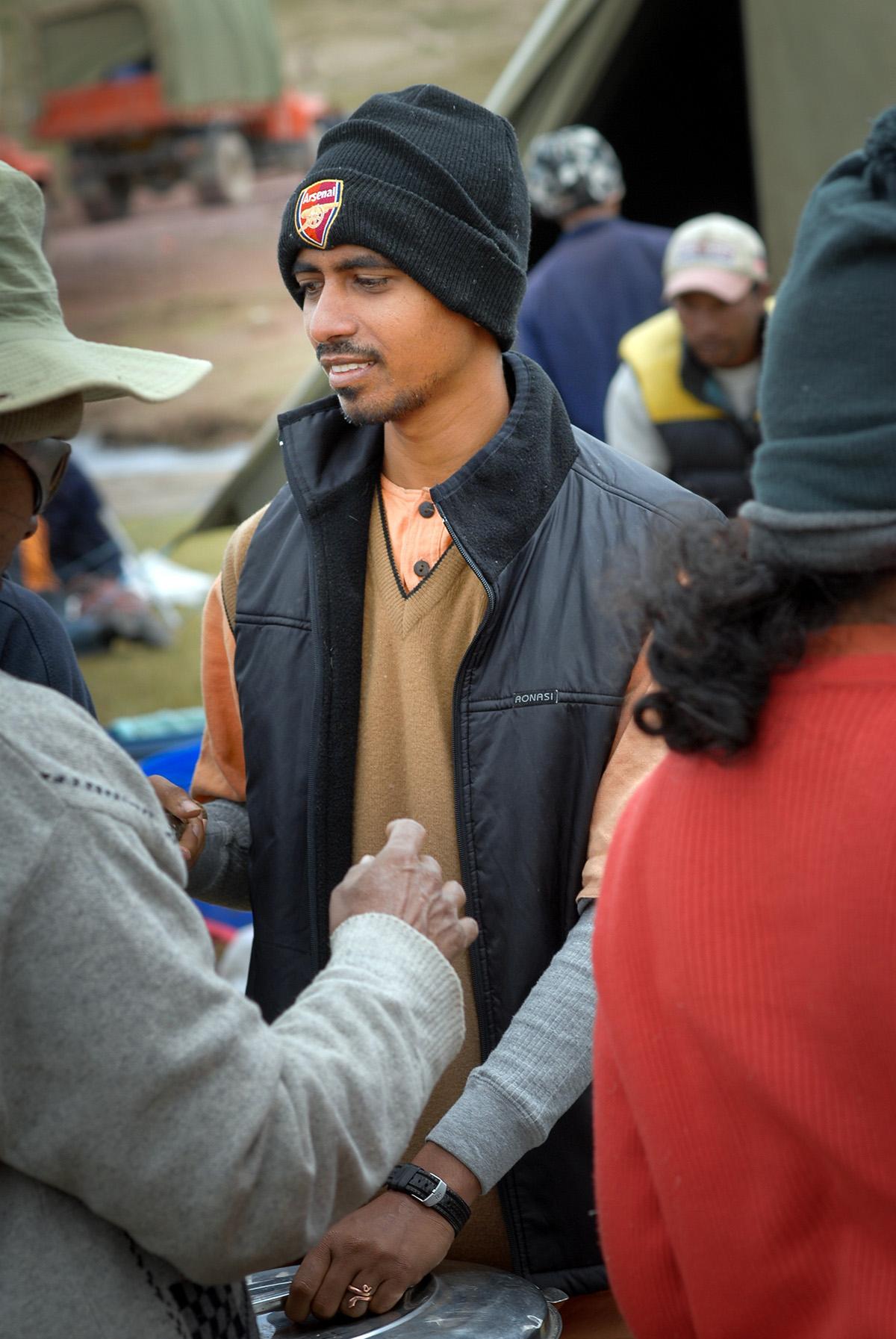
Moving On…
In 2009, I was moved to the Sacred Walks department. Among all responsibilities, I particularly cherished the joy and challenges of the Kailash yatra. The year before I formally joined the department, I had the opportunity to help organize the Kailash yatra. That year, the number of visas to be issued was restricted due to a national event in the region at the time our yatra was scheduled. Only half of the participants in Sadhguru’s group got the visa and, among them, about 40 participants got it 2 days late. The first batch had already left with Sadhguru, and I was assigned to take care of the second batch in Nepal. After two days, we crossed the “Friendship Bridge” between the Nepal and China border after completing the immigration formalities, and it was already noon. Given the terrain and travel time to reach Saga, the leading Tibetan guide recommended that we spend the day in Zhonghe before heading to Saga.
Batch 1 with Sadhguru had already reached Saga. Our batch was desperate to catch up to Sadhguru. Sensing this, Sadhguru, through Maa Gambhiri, suggested if it was possible to leave for Saga immediately. The Tibetan guide hesitatingly agreed. We boarded 10 Toyota Land Cruisers, and everything was going fine until about 6 p.m. Suddenly, all our cars halted. The drivers told us to get out of the cars so that they could go back and help two other cars that were stuck somewhere behind in a small riverine. The Tibetan guide also went back with them. We were in the middle of nowhere. As the sun began to set, the participants started to become nervous. Mobile phones didn’t work in that area, so I couldn’t communicate with the Tibetan guide or Maa Gambhiri. I tried to keep the participants joyful and engaged. Finally, at 9 p.m., the cars came back, and we could leave for Saga.
We reached Saga past midnight. It was a joy to see volunteers waiting for us with hot drinks, snacks, and warm smiles. Behind the reception, a banner was hanging saying, “Happy Birthday, Sadhguru.” In all the logistics, I forgot that we were going to meet Sadhguru on his birthday. The participants were overjoyed. After a couple of hours of rest, we had a Satsang with Sadhguru, and I was asked to do the Guru Pooja. It was the first time I was doing Guru Pooja when Sadhguru himself was sitting there. Even today, I get goosebumps thinking about it. It was one of the highest moments of my life.
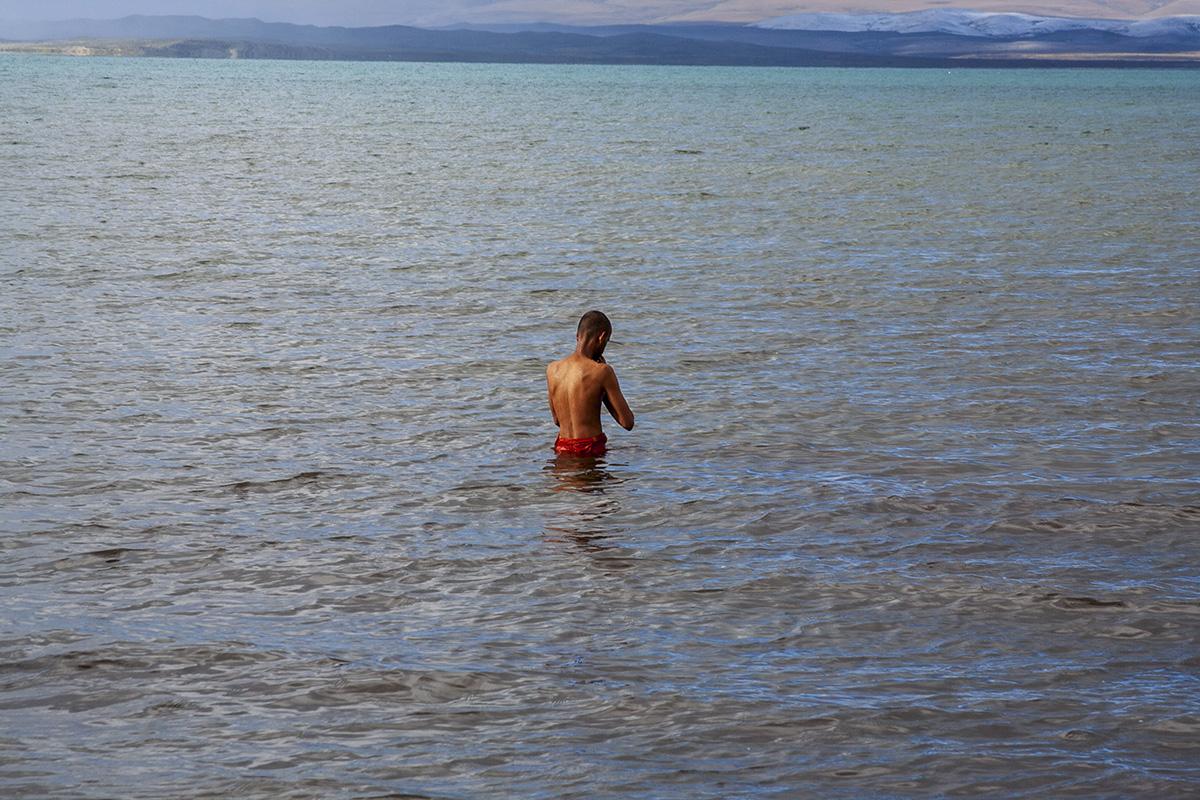
When we reached Manasarovar, Sadhguru asked all the participants to take a dip in the lake for a few minutes after initiation. He didn’t want participants to be in the lake for longer than 3–5 minutes as the temperature was below zero degrees Centigrade. Suddenly, he called me and asked me to stand in the lake at the far side and ensure that participants would not go beyond me and would leave the lake quickly. So I stood there, with water up to my waist in the lake for about one hour – and I didn’t feel cold. Many such magical things happen around Sadhguru during the Kailash yatra.
In 2015, I shifted to the Isha Administration Department. Contrary to its name “Admin,” it is a very vibrant department, and we are involved in every event and all that happens in the ashram. From saving the ashramites during COVID to ensuring the safety of guests, volunteers, and sevadars, everything is important to us. Every day there is a new problem to solve, which keeps me excited.

The Blessing of Being with the Samskriti Students
I also teach Isha Samskriti students and support the department in its various activities. Being with the Samskriti students is so fulfilling. As crafted by Sadhguru, Samskriti students go through a certain discipline from a very young age to support their bodies and minds to find their full expression. This also means that their lifestyle is very different from a child going to school in the city. It is heartening to see many Samskriti children willingly adapt to the Samskriti way. Last year, when we were interviewing 7- to 9-year-old children for admissions, it was amazing to see their willingness to receive what Sadhguru is offering. We usually discourage them by telling them how their food will be different, they will have to get up before dawn, and that Sadhguru might not meet them, but some of them just want to be here, even when parents are happy to send them to a city school.
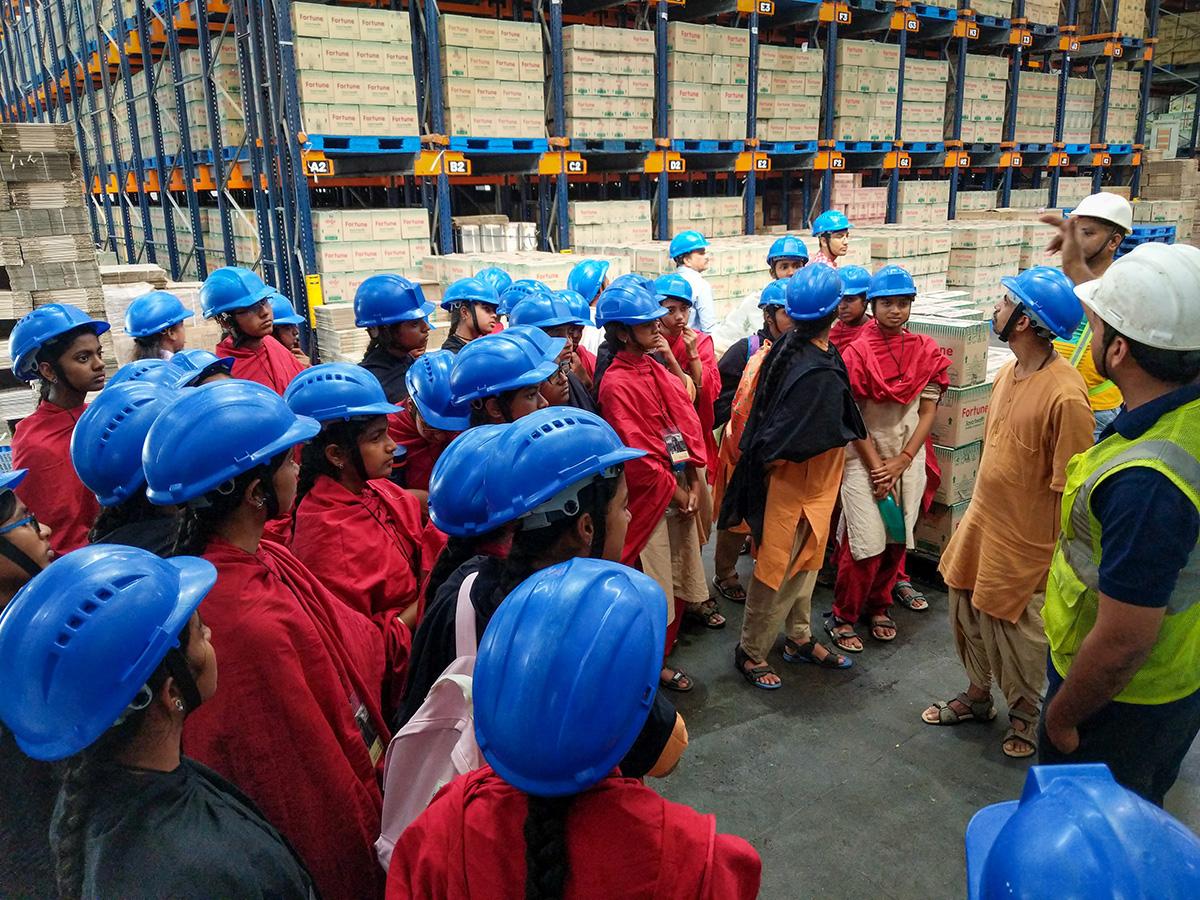
In my experience, Samskriti students are throbbing with life and are much more vibrant than most children I have interacted with. Most of them are so fit that it becomes difficult for us to keep pace with them when we go on a trek. One time during a Bharat Darshan[5], I had food poisoning just before we started the trek. That was when I realized how fast they really trekked. My stomach was continuously gurgling, but their energy was so effervescent that I somehow managed to walk with them for five hours without hardly any breaks. Of course, the moment we reached the base camp, I had full-on diarrhea.
In the classroom, it can be demanding to teach them. Even when they may look inattentive, they are alert to everything I say, keeping me on my toes. I once shared a story of an Indian boy who designed a special drone to help farmers. I had received the story on WhatsApp that morning and found it very inspiring. As soon as I finished telling the story, one student got up and asked, “Is it a true story?” Suddenly, I wasn’t sure, as I had just received it on WhatsApp. “I will check and get back,” I had to say, looking at the earnestness with which he was asking. When I researched, I found that story was not true, and I humbly informed them about it in the next class.
[5] Travels to spiritual sites across India.

Why am I here?
I came here to be with Sadhguru, and to date, I am here to be with Sadhguru. It is strange though that I left my job to attend the Satsang with Sadhguru, and that was the last public Satsang with Sadhguru that I have fully sat for. I am always volunteering somewhere else to make the Satsang happen. But, in my experience, I am always with Sadhguru. In these 23 years, it has never even once crossed my mind to ask, “Why am I here?” I have never doubted my path, and what he is offering. Every day is a new day, yet the same. I am happy.
